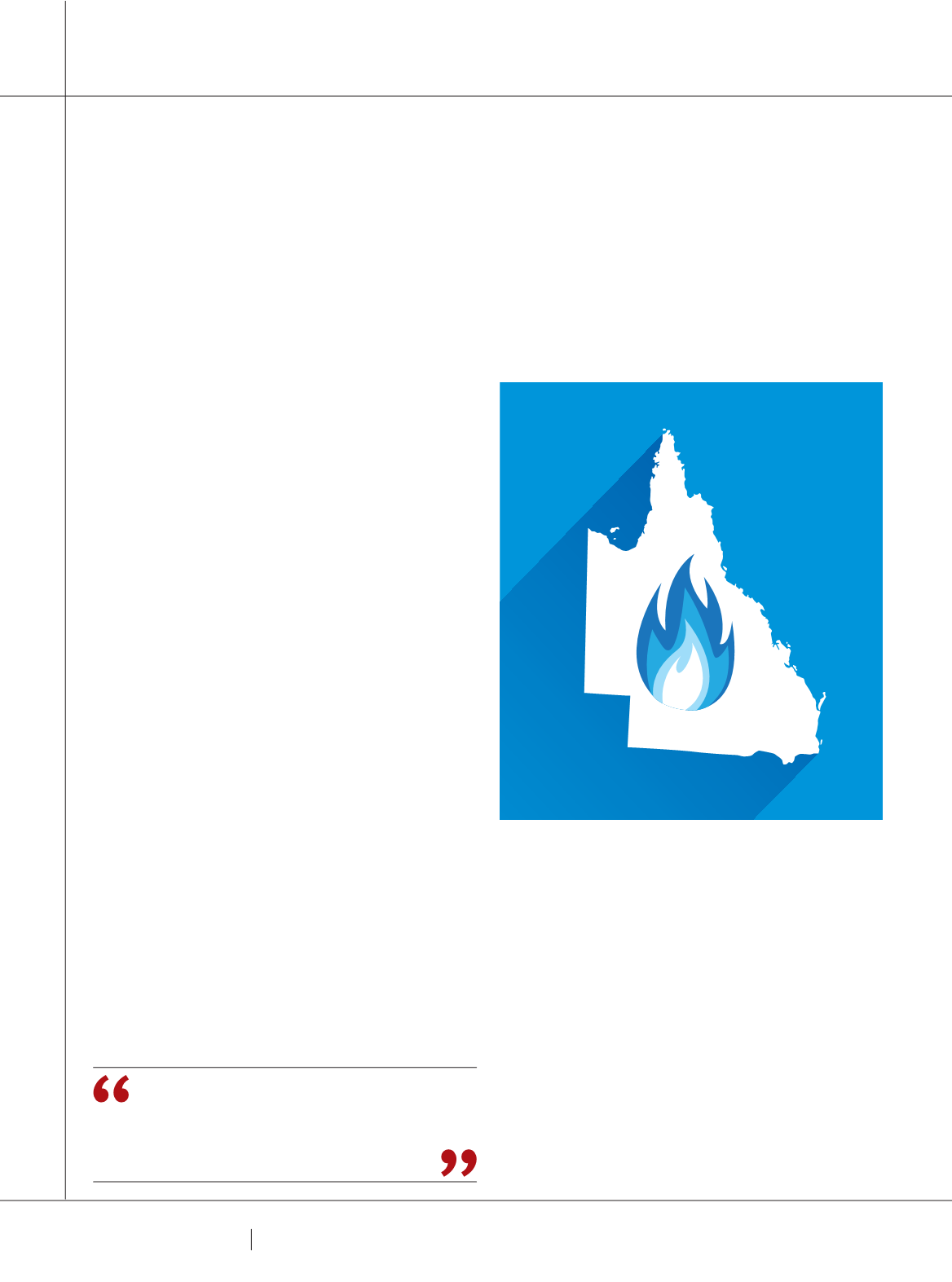

6 0
PLUMBING CONNECTION
SUMMER 2016
HOW GASFITTINGWORKS IN
QUEENSLAND
GAS INDUSTRY OVERVIEW
Liquefied natural gas (LNG) is a major new export for the
Sunshine State and is becoming increasingly important to
Queensland’s economy.
As for natural gas, demand is met from large reserves of
coal seam gas (CSG) and conventional gas reserves. The
majority of conventional gas is drawn from fields in Cooper
and Eromanga basins in south, south-west Queensland with
smaller quantities being extracted from the Surat Basin,
which was Queensland’s original source of natural gas.
Once extracted, the natural gas is transported from the
field to market by five major pipelines that run through the
State, servicing major cities and regional towns.
The State’s gas usage has dramatically risen in recent
times. Queensland has around 187,000 natural gas
residential and small commercial users consuming around
280 petajoules per year, up from 221 petajoules in 2011.
Electricity generation, fertiliser production and mineral
processing accounts for over 97% of Queensland’s gas
consumption, most of which comes from industrial areas
such as Gladstone, Townsville and Mount Isa.
Domestic usage accounts for only 3% of usage, with warm
weather reducing the need for household heating.
GASFITTING REGULATION
The Department of Energy and Water Supply administers
and monitors legislation affecting the Queensland gas
sector through the following Acts and Regulations:
Gas Supply Act 2003;
regulates the supply and sale
of natural gas. This includes business licensing for the
purpose of distributing gas, ensuring sufficient gas supply
to essential areas in times of shortage, public safety during
the gas extraction and distribution process and ensuring
consumer interests are protected.
Petroleum and Gas (Production and Safety) Act 2004;
regulates the technical and safety aspects of gas
production, transmission, distribution and use and also
deals with licensing of gas transmission pipelines.
National Gas (Queensland) Act 2008;
applies the National
Gas Law (NGL) and National Gas Rules in Queensland. The
gas law and rules regulate third-party access to natural gas
pipelines and facilitates the short term trading market and a
bulletin board for information on natural gas services.
Energy and Water Ombudsman Act 2006;
serves to resolve
disputes between energy suppliers and their customers.
Gasfitters working on building sites also deal with the
Queensland Building and Construction Commission (QBCC)
which will be discussed further in licensing.
GASFITTING LICENSING
Type A devices are heating, lighting, power or refrigeration
devices that use gas as their fuel.
IN PREVIOUS EDITIONS,
PLUMBING CONNECTION
HAS LOOKED AT HOW THE GASFITTING INDUSTRY FUNCTIONS IN
VICTORIA AND WESTERN AUSTRALIA. NOW, IT IS TIME TO TURN TO THE SUNSHINE STATE, TO LOOK AT THE REGULATIONS,
REGULATORS, LICENCES AND TRAINING PROVIDERS THAT MAKE UP THE GASFITTING INDUSTRY IN QUEENSLAND.
GASFITTING
ANY GASFITTERS WHO
UNDERTAKE WORK ON A TYPE A
GAS DEVICE SYSTEM MUST HAVE A
CURRENT GAS WORK LICENCE.
















